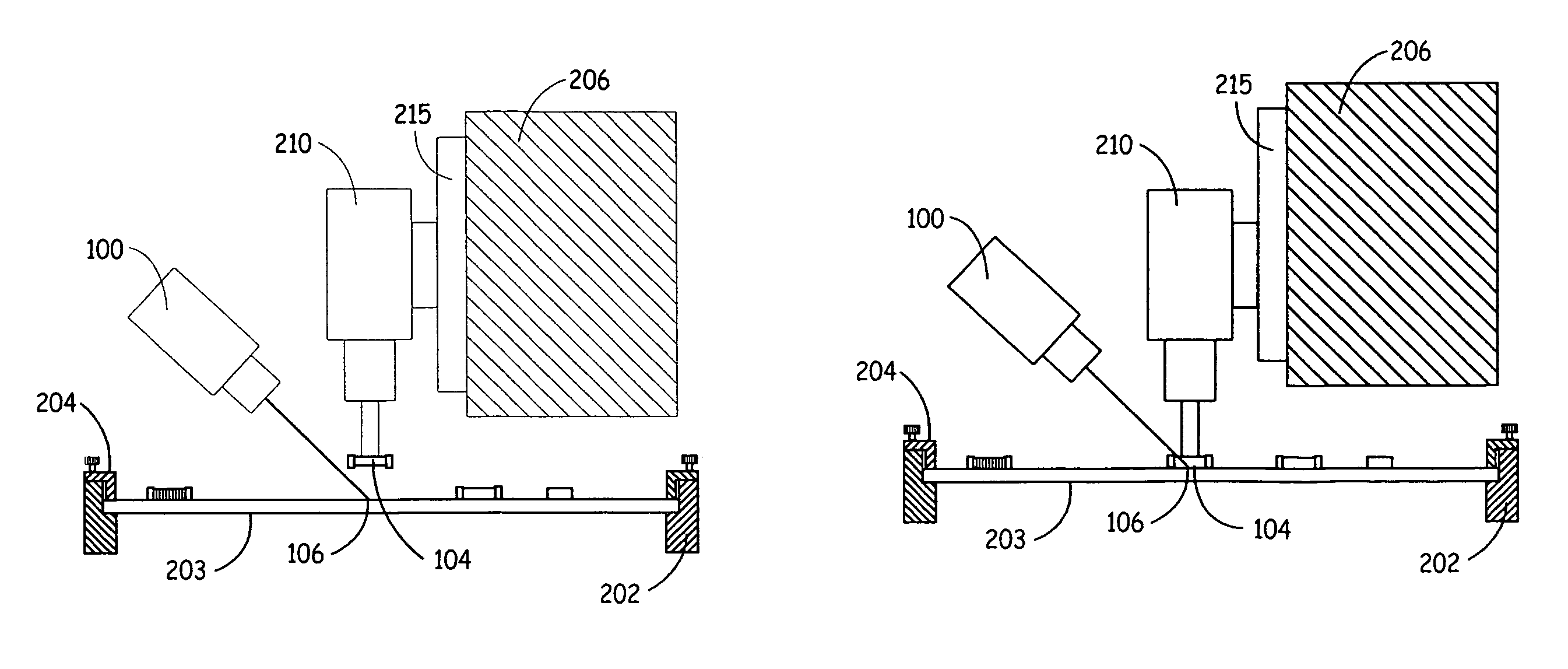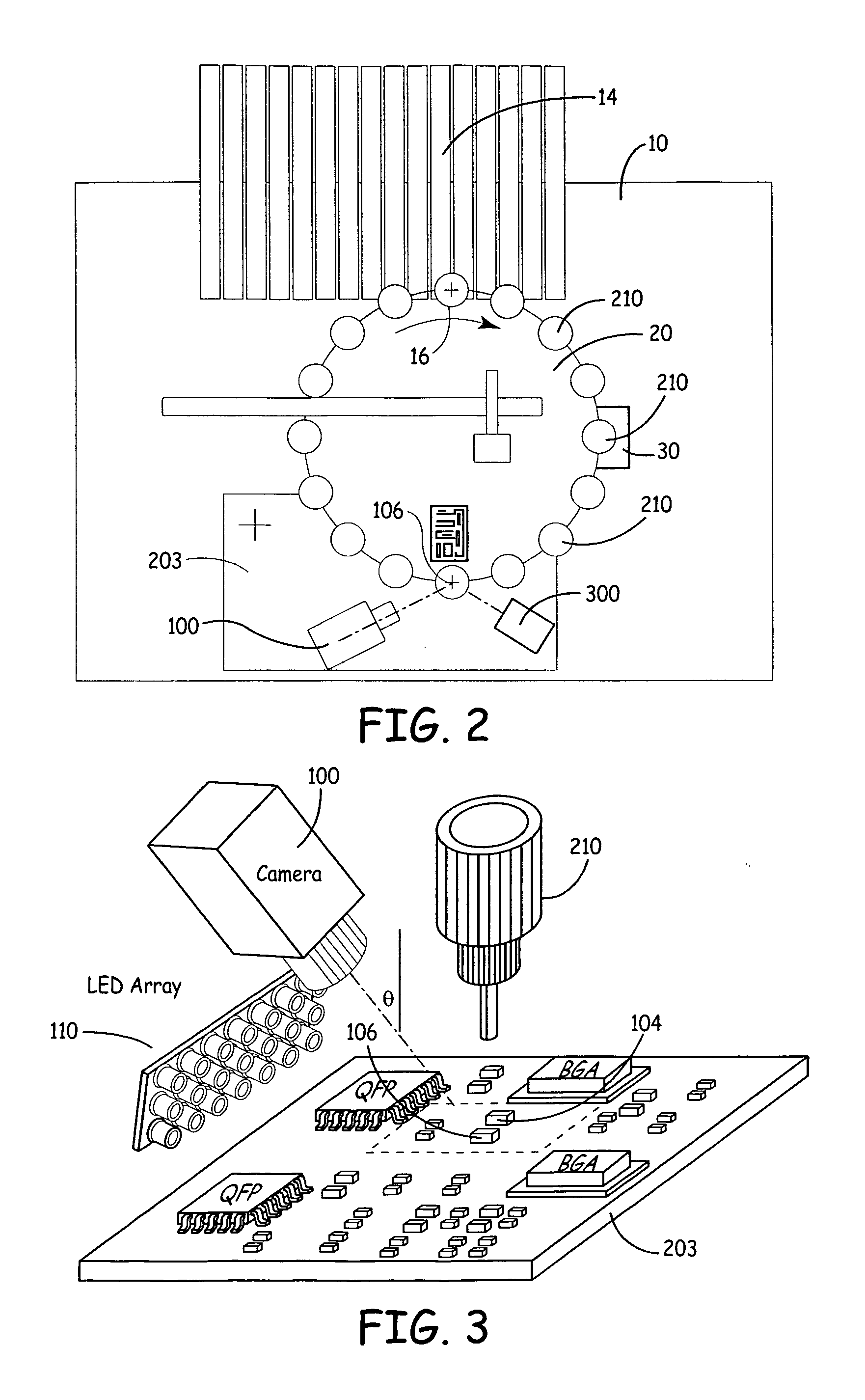Pick and place machine with workpiece motion inspection
a technology of workpiece motion and pick and place machine, which is applied in the direction of instruments, computing, electrical equipment, etc., can solve the problems of programming time and maintenance efforts, and consuming plant floor space, so as to achieve the effect of optimizing the operation of the pick and place machin
- Summary
- Abstract
- Description
- Claims
- Application Information
AI Technical Summary
Benefits of technology
Problems solved by technology
Method used
Image
Examples
Embodiment Construction
[0032]Embodiments of the present invention generally measure the travel of a pick and place machine placement nozzle and the motion characteristics of the workpiece through the placement process. Since the component is placed on the workpiece with some force to ensure proper adhesion to the workpiece, some deflection of the workpiece is expected during the placement cycle. The placement force is adjusted to ensure that the component is safely placed into the solder paste or adhesive. Placement force is adjusted through a number of characteristics including: choice of spring tension in the nozzle; the length of the nozzle and the amount of over-travel into the board; the rigidity of the board and design; and the placement of the board support mechanisms. With proper adjustment of these characteristics and parameters, high quality placements onto the workpiece can be ensured. To properly adjust these parameters, a method of measuring the workpiece motion and nozzle travel is required....
PUM
 Login to View More
Login to View More Abstract
Description
Claims
Application Information
 Login to View More
Login to View More - R&D
- Intellectual Property
- Life Sciences
- Materials
- Tech Scout
- Unparalleled Data Quality
- Higher Quality Content
- 60% Fewer Hallucinations
Browse by: Latest US Patents, China's latest patents, Technical Efficacy Thesaurus, Application Domain, Technology Topic, Popular Technical Reports.
© 2025 PatSnap. All rights reserved.Legal|Privacy policy|Modern Slavery Act Transparency Statement|Sitemap|About US| Contact US: help@patsnap.com



